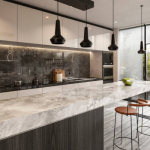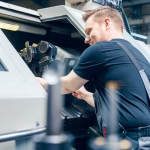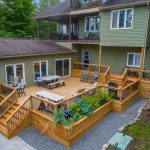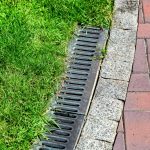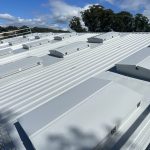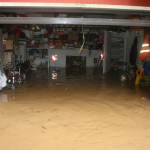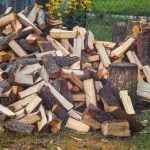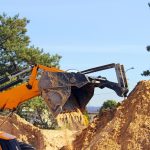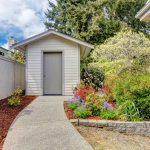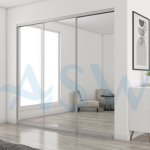How to Plan and Finance Your Dream Shed or Workshop in Australia

There’s something truly Aussie about having your own shed or workshop, a space where you can tinker, build, or simply escape for a bit of peace and quiet. Whether you’re dreaming of a spacious steel workshop for your business or a backyard shed for DIY projects, careful planning (and smart financing) can make all the difference between a quick-fix project and a structure that lasts for decades.
In this guide, we’ll take you through how to plan your dream shed or workshop, from design and council approval to financing options and finishing touches, all tailored for Australian homeowners.
-
Start with a Solid Plan
Before you order the first sheet of Colorbond or dig the first footing, spend some time planning. The more detailed your shed plan is, the fewer headaches you’ll have later.
Here’s what to consider early on:
- Purpose: Is it for storage, a home business, a hobby workshop, or maybe even a guest space?
- Size: Think about what needs to fit inside, not just now, but in five years.
- Location: Check your block’s orientation and accessibility. Will large vehicles need access? Does drainage look good?
- Future add-ons: Plan for power, plumbing, mezzanine floors, and insulation early.
Tip: Use online shed design tools or work with a shed supplier that offers free layout planning. Many companies in Australia will custom-design a shed kit to match your exact site and needs.
-
Get the Right Approvals
It might sound like a buzzkill, but local council approval is a must. Each state and territory has slightly different requirements, so it’s worth double-checking before you start.
In most cases, if your shed is over 10m², located close to a boundary, or includes plumbing or electrical work, you’ll need Development Approval (DA) or Building Approval (BA).
You’ll also need to ensure it complies with the Building Code of Australia (BCA) and local planning overlays, especially if you’re in a bushfire-prone or cyclonic zone.
Need help? PBL Legal has a useful resource section covering property and construction law in Australia, including development approvals and building compliance. If your shed doubles as a workspace or granny flat, it’s worth getting professional advice before signing any contracts.
-
Choosing the Right Materials and Builder
Steel sheds are a no-brainer for Aussie conditions, they’re durable, termite-proof, and low-maintenance. But not all steel is equal.
Look for:
- Australian-made steel (like Bluescope), which is engineered for our harsh climate.
- Galvanised frames for corrosion resistance.
- Insulation and vermin seals to keep the space comfortable and pest-free.
If you’re DIY-minded, a shed kit can save thousands. But for larger or complex builds, it pays to work with a licensed builder who specialises in rural or industrial sheds.
-
Estimating Costs, What to Budget For
The cost of building a shed in Australia varies widely depending on size, materials, and inclusions.
Here’s a rough guide:
| Type | Size | Estimated Cost (AUD) |
|---|---|---|
| Small garden shed | 3m x 3m | $1,200 – $3,000 |
| Single garage | 6m x 3m | $5,000 – $10,000 |
| Workshop / large shed | 9m x 6m | $10,000 – $25,000+ |
| Livable or business shed | 12m x 9m | $25,000 – $60,000+ |
Remember to factor in:
- Concrete slab ($80–$150/m²)
- Electrical and plumbing
- Insulation and lining
- Council fees and permits
- Driveway or site prep
It’s easy to underestimate these extras, so always allow a 10–15% contingency buffer in your budget.
-
Financing Your Dream Shed
Unless you’ve been saving for a while, chances are you’ll need to explore some form of finance. The good news is that Aussies have a few solid options, from personal loans to mortgage top-ups.
Option 1: Refinance or Top Up Your Home Loan
If you already own a home and have built up equity, you can refinance or add a top-up to fund your shed project. It’s often cheaper than taking out a new personal loan because home loan interest rates are typically lower.
For example, Koalify is an Australian online mortgage broker that compares loans from multiple lenders, saving you time and helping you find the best deal without needing to visit a branch. This kind of online setup can streamline the whole process and help you understand whether a home loan top-up or refinance makes the most sense for your situation.
Option 2: Personal or Green Loan
If your shed is small or standalone, a personal loan might be simpler. Some banks even offer green loans for energy-efficient or solar-ready sheds.
Option 3: Business Finance
For tradies, mechanics, or small business owners, a shed might be a workspace or warehouse. In that case, equipment or business finance options can apply, often with tax benefits.
Pro tip: Compare interest rates, fees, and flexibility before locking in. A small difference in the rate can mean thousands saved over the life of the loan.
-
Smart Add-Ons to Increase Value
Once your shed is up, consider add-ons that make it more functional, and add value to your property.
A few worth budgeting for:
- Insulation and ventilation: Keeps it cool in summer and warm in winter.
- Windows and skylights: Natural light makes any workshop more enjoyable.
- Vermin and ember seals: Protect your shed contents and improve safety in bushfire zones.
- Shelving and storage systems: Maximise your space from day one.
- Solar panels: Cut energy costs if you’ll be using power tools or lighting regularly.
If you’re buying tools or furniture to kit out your space, make sure you’re getting value. As the website Factory Buys puts it, “we’re committed to bringing Australians affordable products without compromising on quality.”
That’s exactly the kind of approach that works when furnishing your new shed or workshop, practical, affordable, and built to last.
-
DIY vs. Professional Build
A big decision is whether to DIY your shed or hire professionals.
DIY Build Pros:
- Save thousands in labour costs.
- Satisfaction of building it yourself.
- Great for smaller sheds or experienced builders.
DIY Build Cons:
- Can be physically demanding and time-consuming.
- Mistakes can be costly (and dangerous).
- Warranty or compliance may be affected if not done correctly.
Professional Build Pros:
- Faster completion.
- All council approvals and compliance handled.
- Often includes warranty and after-sales support.
If you’re not 100% confident, consider a hybrid approach: get a shed kit supplied, but hire local tradies for the slab and assembly. It’s a balance between cost and quality.
-
Make It Bushfire and Cyclone Ready
Australia’s climate can be unforgiving. If you’re in a bushfire-prone area (BAL zones), check for compliant ember seals, metal cladding, and non-combustible materials.
In cyclone-prone regions (like coastal QLD or WA), ensure your shed kit or builder uses cyclone-rated components and meets AS/NZS 1170 structural codes.
Not only is this crucial for safety, it can also impact your insurance and resale value later.
-
Add the Personal Touch
This is the fun part! Once the structure is up, you can customise it to make it truly yours.
Some popular ideas:
- Polished concrete floors or epoxy coating for a clean finish.
- Workbench and pegboard walls for tools.
- Mezzanine floor for storage or an upstairs office.
- Rainwater tank to collect runoff and stay sustainable.
- Painted trims or feature walls to match your home’s aesthetic.
A well-finished shed doesn’t just look good, it can become a real lifestyle space, whether that’s a workshop, gym, man cave, or small business hub.
-
Think Long-Term, Maintenance & Value
Once it’s built, keep your shed in top condition:
- Re-seal and check roof screws every few years.
- Keep gutters and downpipes clear.
- Inspect insulation and seals for vermin damage.
- Touch up paint or zinc coatings as needed.
A well-maintained steel shed can easily last 30+ years with minimal effort, and if it’s insulated, plumbed, and powered, it adds genuine resale value to your property.
Final Thoughts
Planning and financing your dream shed in Australia isn’t as daunting as it sounds, it’s just about being smart from the start.
Start with a clear purpose, plan for approvals, and budget realistically. Explore your finance options, check your compliance obligations, and furnish your space wisely.
Your shed or workshop can be more than just storage, it can be an investment, a workspace, or a little slice of Aussie freedom right in your backyard.






